Travel Diary
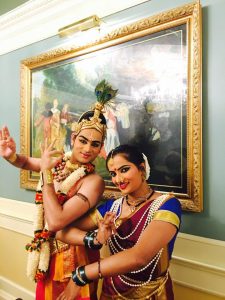
Dance for the Royalty By Seema Hari Kumar “It is not very often that you get to perform before royalty and, that being a piece that brings to life the artwork of their ancestor, makes it more than just a ceremonial treat! This is exactly how I would sum up my experience of having performed at the inaugural Ladies’ International Symposium organised by the All-Malaysia Malayalee Association (AMMA) in Kuala Lumpur in August 2016.” It is always exciting to get an invitation to perform in Malaysia because despite being the closest neighbour, the number of times a Singapore-based dance company like us performs there, are fewer than several other countries on the map. So when this invitation came to Apsaras Arts, I was really happy to be selected as part of the very small cast that was going. I recall Aravinth anna reading out the invitation and their request for us to feature segments from our production entitled “Heroines of Raja Ravi Varma” which first premiered at the Esplanade Theatres on the Bay in 2012. Its naissance was vividly etched in my mind – there were countless meetings in which Aravinth anna would bring the paintings of Raja Ravi Varma to show Maami and she would excitedly put on her reading glasses to scrutinise every detail of accessory, hairdo, makeup and fabric that the painted heroine adorned to make notes for requisition. Perhaps it was the care that both of them took to breathe live to these timeless works of art, through the music and carefully picked lyrics right up to the costuming detail, that made this a popular request by several organisers in the years that followed. We re-staged segments from this production subsequently on different occasions but what struck me was the nature of these invitations. It could not have been pure coincidence that all the prosceniums that presented the “Heroines of Raja Ravi Varma” espoused class and were for an audience that were steeped in art appreciation. Fast forward to this event in 2016, it bore semblance to these occasions in which the production was re-presented. This time it was even more special because we were to perform the highlights of the “Heroines of Raja Ravi Varma” before Her Royal Highness, Princess of Travancore, Kerala, Princess Aswathy Thirunal Gowri Lakshmi Bayi who was presiding the Ladies International Symposium. This was reason enough for me to leave my then 2-yr-old Deeksha home for the first time since her birth, on this two-night getaway to don my role as “Radha” in the production! The decision went unregretted because we had the opportunity to meet the princess up close on the day we arrived, where we had the great privilege of having lunch with her. We watched her quizzing Aravinth anna on the conceptual journey of how her grandfather’s works were brought to life through music and dance. Her unassuming personality and grounded nature were extremely humbling. I went back to the hotel room dreamily getting ready for that evening’s showcase and as the curtains went up, seeing the Princess Gowri amma in the first row first gave me a jolt of anxiety. As the performance progressed, I couldn’t help notice how her eyes lit up in appreciation when I struck the pose that her grandfather had so beautifully brushed into a painting. And just like a fairy tale, we had a happy ending to that event each one of us wistfully looking forward to the next special moment that the hero behind these beautiful heroines would bring us!
Travel Diaries
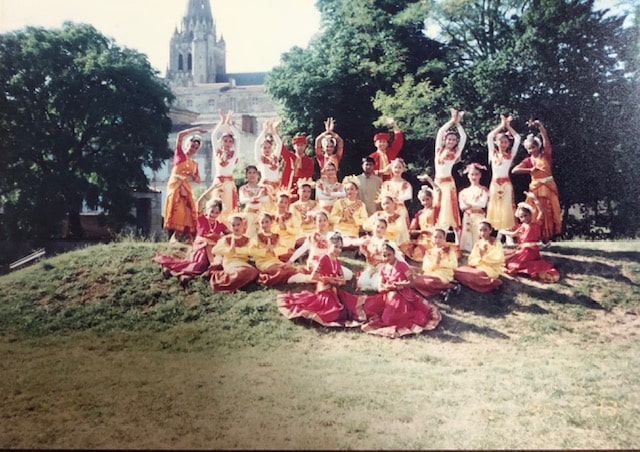
Little Angels in Paris Just as we celebrate our founder, Neila Sathyalingam’s birth anniversary, we travel back in time to share a travel nugget from Little Angels, a multi-ethnic ensemble she co-founded. The Singapore Multi-Ethnic Ensemble Little Angels was formed in 1985 by three prominent dance teachers. Neila Satyalingam, Som Said and Yan Choong Lian. Their intent was to carve out their “spaces” in Singapore’s cultural firmament. Little Angels was a platform to present programmes for children. The performances, which were multi-disciplinary, featured hybrid elements of Chinese, Malay and Indian dance which extended the borders of each of these distinct dance styles to engender greater excellence and artistry while promoting inclusiveness and the embrace of multiple cultures. This forging of a Singaporean dance resulted in the ensemble travelling overseas and performing in well-regarded arts festivals in Europe in the 1990s. A senior dancer and psychiatrist, Deva Priya Appan recalls, “I was part of Little Angels. In 1995, when I was in Primary 5, I travelled to Paris with the troupe and we all had to learn elements of Malay and Chinese dance along with Bharatanatyam and we performed there. It was during school term time but my parents allowed me to participate as they considered it prestigious and I remember it as a memorable experience which further quelled my interest to dance and perform.”
TRAVEL DIARIES

Of lights, tours, board games and Sri Lanka Chandigarh-based lighting designer, Gyandev Singh, brings to life his experience of touring Parama Padam through cities and the sights and sounds of Sri Lanka Parama Padam The game of Snakes and Ladders- Touring Sri lanka- The pearl of Indian Ocean Since its premier back in 2019 in Singapore, the performance of Parama Padam has had many successful shows. This thematic production gives an insight into the ideas behind the Vaishnavites game of the same name which teaches the core moral values of human life. Copied later by the British (naming it snakes and ladders), this board game has a hundred squares which are replete with snakes and ladders. The ladders in the game represent good virtues and the snakes indicate vices. Ladders take you up as the good deeds take us to heaven, while the snakes bring you down as a cycle of rebirths. The final goal is to reach Vaikuntha or heaven. My collaboration with Apsaras Arts – Mohanapriyan and Aravinth ji – was particularly interesting because it was a play between technology and the human body. The intersection between the dynamics of the body having a dialogue with lights and both parties intruding into each other’s spaces, creating a dance of its own kind, bordering between chaos and harmony. Between the spontaneous and the computed. It was an experiment to empower the digital, the computed to find its own spontaneity and intuitiveness and become an independent co-player in the performance. We were very excited to take Parama Padam to Sri Lanka because of two reasons. First, it is the country of birth for both Aravinth ji and Mohanapriyan. And secondly, we wanted to see how the production would do in smaller less equipped auditoriums. And to break the general misconception that this production was tech heavy and could not be done in less equipped auditoriums. In our minds, it was important to share this theme with people of Sri Lanka, even if it meant we had to alter and redesign a few parts. The tour first started in Jaffna, north of Sri Lanka. Being an area torn apart during the bloody civil war, the audiences resonated with the theme of the production, which was, how to escape the snakes of deceit, greed and ego to reach the 100th block, the place of moksha. We performed at the NCOMS auditorium, which has been a center of Tamil art and culture in Sri Lanka for decades. What was really heartfelt was that this performance was organised by the dance teaching community of Jaffna. All the ladies came to watch the performance in beautiful sarees. I remember, during the performance the electricity went away but none of the audience moved out of the auditorium. They were transfixed, almost as if they were dancing with Mohanapriyan themselves.It was really fulfilling to receive all the love and appreciation from the audience. After that we were invited to perform at the opening of the Jaffna Cultural Centre. This center is a state of the art eleven storey building interestingly funded by the Indian government. I was happy that India was contributing to the development of art and culture in Jaffna. The performance was attended by many distinguished guests from India and Sri Lanka like the Indian foreign minister, and many Sri Lankan Cabinet ministers. It was an honour for all of us at Apsaras Arts to be performing at the opening of such a grand and prestigious arts center. The next performance was at the Jaffna University. Mohanpriyan even conducted a workshop on dance and I gave a talk on lighting design in classical dance. It was so refreshing to have young energies to come and participate in these interactions. The performance was held at the university hall which was a rather small stage with no lighting bars at all. I spent an evening redesigning the lights. We hung some lights on the projector screen, some on side stands made out of isles from the art department and some on the floor. At the back I put some lights vertically on four stands. This surprisingly gave a beautiful effect for the climax of the show. Many Students of dance, theatre and the arts came to watch. All faculty members of the University were also present including the Viceroy. It is always satisfying to have a full house and they all loved the performance. We got a standing ovation for about seven minutes. They all loved Mohanapriyan who was absolutely fabulous with his energy and soulful abhinaya. Then we travelled to Colombo, the country’s capital. Our performance was going to happen at the Lionel Wendt theatre. A theatre with a very distinct old world charm about it. A 600 seater hall with great acoustics and amazing sight lines. It had wooden chairs with cane mesh. Not the plastic ones, but an actual cane mesh. Also, The place looked like it was run and maintained by passionate people who were genuinely interested in promoting the arts. I saw the country’s first lighting dimmer which was the size of an almirah! A few days before the performance, we got to know that there would be a curfew in the city. This was because of the protests against the economic crisis that the country was facing. It was inspiring to see even women and children, joining in the protest saying, enough is enough!, things would have to change now. But we, along with our colleagues at the Lionel Wendt Centre decided that we will not leave without performing here. During a collective crisis like this one, art is the only thing that grounds the people and reminds them about their innate human nature of love and understanding. We wanted to do our bit too. We decided to postpone our show for two days till things settle down. The people who had already bought tickets were informed about the shift and were given the option of either watching the performance
Travel Diaries
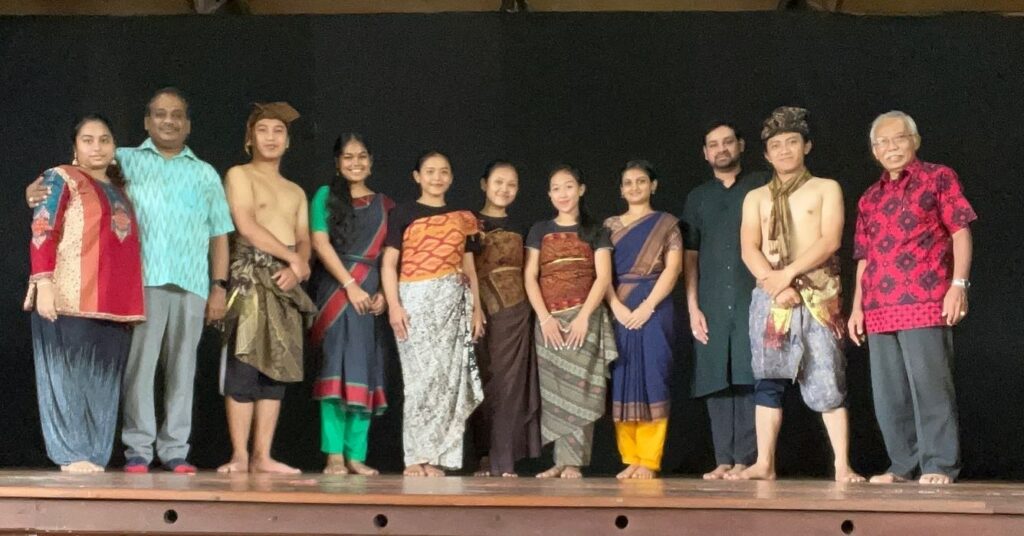
A first-person account on the culture, tradition, art, life and architecture of the country Bali by dancers of Apsaras Arts, Janani Arun Kumar and Periyachi Roshni. As we entered the cultural heartland of Bali, Ubud, our eyes were transfixed on the intricate soft stone carving in every single house on the street. While other countries strive to become more modern and advanced, this little island places utmost importance to preserving its ancient Hindu culture. Every street, corner and home is deeply rooted in the spiritual and cultural values passed on by several generations. Be it praying everyday, living in a collectivistic culture or respecting and valuing people, nature and art, Bali has managed to somehow retain its personality through globalization. Perhaps the culture, serenity and kindness is what has made this island one of the most sought after holiday destinations. While some might reduce it to the ‘free country’ where parties and merriment are unlimited, there is so much more to this beautiful paradise. The most unique aspect of Bali that caught my eye was definitely their traditional homes. In a large compound a huge joint family resides together. The houses are made of a faded orange brick and lined with carved stone. Each small building in the compound, no higher than a storey or two welcomed us with a balinese wood door. The flowery lace like carving on each door was enhanced with a tint of gold making it look ornate yet classic. The people gave us warm smiles and all you could hear inside the compound was the chirping of the birds in the trees and soft chatter in the compound. The place, although new, still gave me a sense of being at home. As we moved past the living rooms, discussion room, grainery for rice, and a function hall, we were led to the family temple at the north east corner of the compound. While all the other roofs were covered in clay tiles, the roofs on the altars were made of dried hay that had turned a charcoal black with age. The temple hosted altars for the mother temple Besakih, for the family gods and ancestors. As the Balinese do not believe in the worship of statues, each altar was a slender high raised rectangular structure topped with a throne where they believed that their gods would descend if they prayed with utmost devotion. Even the mother temple Besakih hosted the three magnificent thrones for Brahma, Vishnu and Shiva, the Tridatu. Several pilgrims walked up the meandering hills during the Besakih temple festival and waited for hours together to pay obeisance to their gods with flowers, rice and incense sticks placed in a palm-sized leaf basket. They also applied rice to their foreheads, just like a bindi at prayers. The Besakih temple had a huge fleet of stairs leading up to what seemed like a gateway to heaven with two carved stone hedges for doors and the fluffy white clouds against the serene blue sky. The gopuram of the temple stood towering the main entrance that is only opened once a year. All the altars were placed inside the open compound of this gopuram. I am a Hindu and am familiar with the Hindu practices but the way the Balinese approached their rituals in the same religion seemed completely different, until you understand that the significance of these practices are very similar at heart. However, the way the culture is instilled in the younger generations is a testament to their strong yet liberal beliefs and culture. The Balinese way of life is also deeply intertwined with their nature. They cultivate their own grains, the most important is rice. Each home, each temple and each building on the road would have several plants nestled in them in addition to the lush green trees and fields, engulfing the village roads. An air of calm always prevailed around the island and the vast blue sky made it seem as though the whole of this island was under one collective roof. It also seemed as though every corner had an altar and every street had a theater. Art is abundant on this island from streets overcrowded with sculptures, baskets, wood carvings, clothing, paintings, music and dance. Art truly flows in the blood of the balinese and is revered by its people. Being dancers ourselves, we were thrilled to work with the local artists in Bali and gained so many insights into their rich art form. We had the privilege of working and collaborating with Prof Dr I Wayan Dibia and his dance company, Geok ensemble dancers for an upcoming project in November 2022. Geria Olah Kreativitas Seni (GEOKS) is a non-government organization based in Singapadu village of Gianyar-Bali. It is a theater space built by Prof Dibia where we spent most of our time collaborating and learning together. This space also welcomes any controversial and contemporary art and dance and the professor makes it a point to support the young and upcoming choreographers and artistes. Entering the space, we felt a sense of overarching peace as it was situated in the midst of nature and surrounded by traditional Balinese houses including Prof Dibia’s ancestral home. Throughout the choreographic process it was interesting to see, not only how the two dance forms came together but also how the two choreographers Dibia and Mohanapriyan sir tried to find middle ground between their two distinct styles. As it progressed, we learnt that actually there are many similarities between Bharatanatyam and Balinese dance as they both follow principles of the Natya Shastra. For example, the turned out position of the feet, eye and head movements,Trianga is known as Tribhanga in Indian classical dance. Thus, taking these similar traits into consideration it was a fruitful experience seeing how Priyan sir tried to find steps that would correlate to that of the Balinese dance. Another similarity was the using of neck movements attami in Bharatanatyam or using pretitam and chaaris. To our surprise the balinese
Travel Diaries

A trip to the learning campus – Monash @ Melbourne, Australia for IPAC 2022, was for Apsaras Arts and its team, the possibility of learning and creating memories, aplenty After curating and convening the Indian Performing Arts Convention (IPAC) in Singapore annually for 11 years, it was exciting for Apsaras Arts to travel to Melbourne, Australia to present IPAC’s edition in Australia. Last year in 2021, through the pandemic, the Convention forayed into Melbourne as a hybrid event with in-person delegates meeting the faculty from India, virtually. It was very special for Apsaras Arts this year to have all the delegates and faculty arrive in-person at the Ian Porter Center for the Arts at the Monash University, Melbourne. For team Apsaras Arts it is like the opening of a new horizon to bring the 11-year- old annual Convention from Singapore across seas to an international destination. The team from Singapore consisting of faculty and artistes – Mohanapriyan Thavarajah, Seema Hari Kumar, IPAC manager Sanakri Elavalahan, volunteer Madumitha Abhirami led by the convenor, Aravinth Kumarasamy arrived in Melbourne, along with faculty from India – Rama Vaidhyanathan, Bragha Bessell, Lalgudi GJR Krishnan, Lalgudi Vijayalakshmi, performing artiste – Mandolin U Rajesh, and lighting designer Gyandev Singh, who were all welcomed at the airport by M Ravichandira, Apsaras Arts’ collaborator from Australia along with his team of volunteers. At the Monash University, Tom Gutteridge and his team began preparing for the Convention nearly three months ago, and on the opening day, it was all set to give the delegates and the faculty a week-long experience of IPAC filled with moments of fun, learning and memories. Every day, the sessions began with masterclasses from the morning and went on until the sun came down with a lec-dem helmed by artistes from Australia alongside visiting artistes from India and Singapore. From Thursday to Sunday during the weekend, the IPAC performances were presented at the state-of-the-art Alexandra Theatre. The IPAC 2022 Australia’s opening concert was Confluence. In a rare appearance on Australia’s stage, Indian star ‘Mandolin’ U Rajesh created magic with a collaboration across cultures and celebrated with his music, the confluence of musical traditions. In this exclusive Australian concert, ‘Mandolin’ Rajesh was joined together with a group of leading Australian musicians whose love of and engagement with India’s Carnatic music tradition goes back decades. Led by musical director Adrian Sherriff, together with Sandy Evans, Paul Grabowsky, Jonathan Dimond and Ravi M Ravichandhira, this virtuoso band had – leading upto the performance – worked intensively with Rajesh to create a unique concert experience. On the second day IPAC presented a double-bill of two Bharatanatyam performances from Singapore. With Seema Hari Kumar in Mohini and Mohanapriyan Thavarajah in Parama Padam, these performances were preceded by a music concert – The Five Gems of Lalgudi. It was a unique opportunity for the audience to listen to the extraordinary Lalgudi Pancharathna Kritis performed by an ensemble featuring vocalists from Melbourne, trained by Lalgudi GJR Krishnan and Lalgudi Vijayalakshmi. It was truly an unmissable opportunity to watch this legendary production live in Melbourne in the intimate environs of The Count’s Jazz Club at Monash University. On Day 3, this violin-duo, Lalgudi G J R Krishnan and Lalgudi Vijayalakshmi, brought to Melbourne audiences an afternoon of beauty, serenity and virtuosity. In their music, the audience experienced the richness of their repertoire and the brilliance of their improvisation skills, set against the backdrop of the weighty classicism. The gripping tête-à-tête between the siblings combined with the medley of ragas in the second half left listeners craving for more. The third day concluded with a performance titled New Dimensions to the Margam by Bharatanatyam exponent, Rama Vaidyanathan who presented a fresh set of compositions that she explored and those that went beyond the parameters of the Margam. Each composition reflected the inevitable phenomenon of how creativity and tradition go hand-in-hand. The presentation consisted of original dance choreography as well as an original musical score, showcasing the versatility and adaptability of the Bharatanatyam dance form. On the final day of IPAC Australia, the grand finale was a concert featuring IPAC delegates – artistes from across Australia. Presented by the Alexandria Theatre, Monash University, the performance was the culmination of a week-long dance intensive and a celebratory concert performance of iconic compositions of Indian classical music and of repertoire from dance. Delegates were mentored by visiting IPAC international faculty like Rama Vaidyanathan, Bragha Bessell and Mohanapriyan Thavarajah. For team Apsaras Arts, the trip to Melbourne was truly memorable; the opportunity to meet and interact with delegates who had travelled from Brisbane, Adelaide, Sydney and Perth, joining their peers from Melbourne who had come in large numbers, this was indeed a special Convention. The visit also gave the team an opportunity to attend inspiring lecture demonstrations by Australian artistes – Dr Chandrabhanu, Anandavalli, Jayashree Ramachandran, and Ramnath and Gopinath Iyer. In addition, IPAC IPAC Australia also honoured the Lifetime Achievement Award – Natya Aachaaryamani – on veteran Bharatanatyam gurus, Dr Chandrabhanu and Shanthy Rajendran. in recognition of their contribution to the arts landscape of Australia. Every evening, the visiting faculty from India and Singapore also enjoyed enjoying delicacies at some of Melbourne’s finest restaurants that served a slew of cuisines from across the world. On the last day of the Convention, the team went to see the beautiful tulips at a flower show and to a farm to see Australia’s native animals.
Travel Diaries
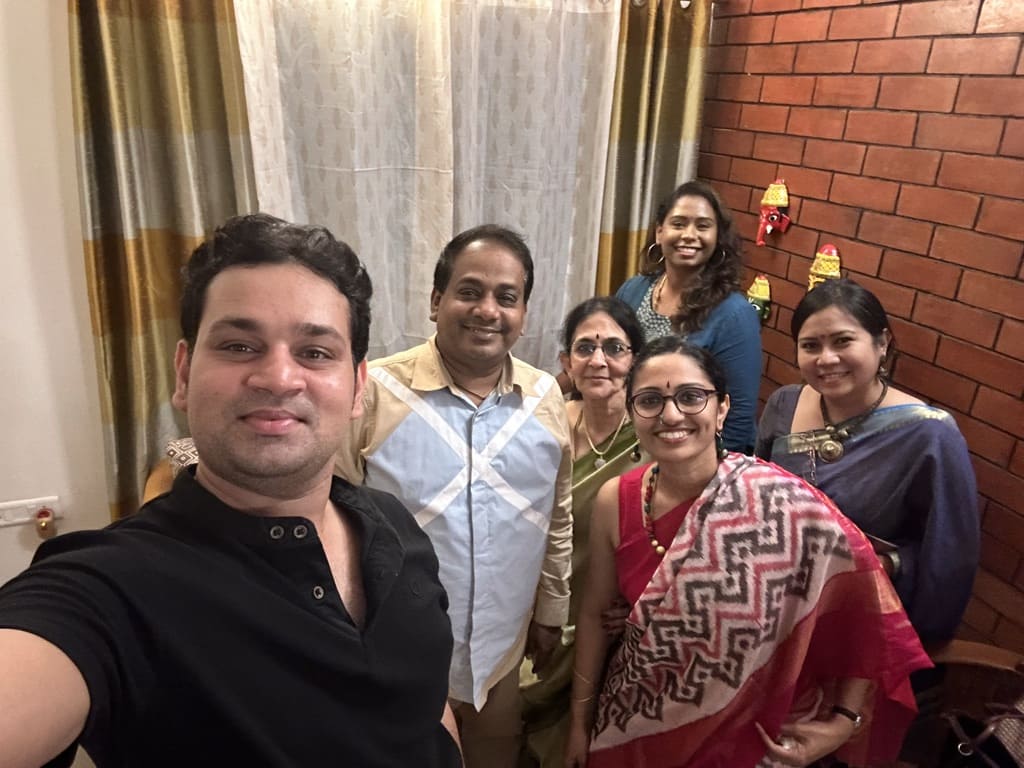
Spirit of Margazhi Bharatanatyam dancer Nitya Sriram from Singapore recounts her experience of the December Music Dance season 2022-2023; her learnings, new perspectives and connecting with the dance community from across the world in Chennai The company dancers and I had excitedly gone through the Music Academy schedule multiple times, prior to the trip and had almost memorized it. We chatted away on the flight to Chennai, discussing the exciting line-up of the Madras Music Academy Dance Festival. This time, we at Apsaras Arts, had the lovely opportunity of dancing at two prestigious venues in Chennai at Vani Mahal on 5 January and the prestigious Madras Music Academy on 8 January. The dance festival line-up at the Music Academy was, as always, amazing. Every solo artiste had something unique to bring to the festival. Bharatanatyam dancer Praveen Kumar kickstarted the festival with a phenomenal solo. He performed the piece, Yathai Kandu Nee Ichai Kondai, in ragam Kalyani which I will never forget. This Padam was narrated from the perspective of a father and is about dealing with his relationship with his daughter, and was different from the typical Padams that we usually learn. Every artiste incorporated a piece of themselves into their dancing and there was a lot of divergence from traditional topics that were covered in their repertoire. It was truly refreshing to watch and spurred some creative ideas in me as well. Apart from the slew of performances, we had rehearsals every day. We got the opportunity to re-unite with our friends from India. It was fantastic to spend time with Rutuja, Nivedha and Vaishnavi who danced with us just a couple of months ago at Esplanade Theatres for ARISI:Rice. We immediately got to syncing our learning with theirs and had a fabulous time dancing with them on stage in their home ground. Vani Mahal and Music Academy are venues I have frequented since I was a child and have seen so many of my dance idols perform here, and to be dancing on those very stages felt absolutely surreal to me. Connecting with other like-minded dancers, watching programmes and dancing everyday, made the trip wholesome. To be in a city with so much talent during the beautiful season of Margazhi will be an experience I will never forget.
Travel Diaries
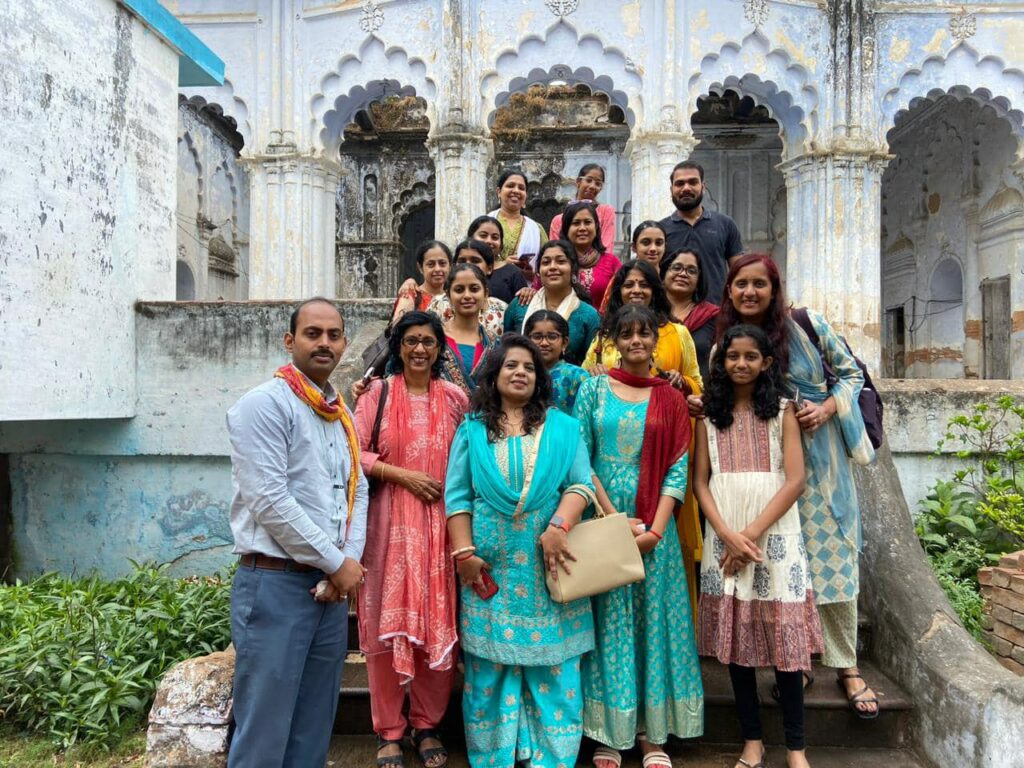
Epic Memories! … reminisce about their trip to Ayodhya in March, which transformed many dancers from Apsaras Arts and how this experience would go on to remain special in the hearts of these dancers waiting to take on life… On March 29 2023, 11 young dancers from Apsaras Arts, under the guidance of our Academy Principal Vijaya Nadesan, took almost a 12-hour journey to reach Ayodhya, the birthplace of Lord Rama in Uttar Pradesh, India to perform Bharatanatyam-based repertoires in a festival. The festival was organized by the local government on the occasion of Ram Navami (a Hindu festival that celebrates the birth of Lord Rama). The initial idea of traveling to Ayodhya and performing came as an exciting proposition to our young dancers. Their first thought most likely was, who would they be sitting next to in the airplane when they travel. Most of the dancers are young, around the age of 11 to 13 years and traveling with their friends for the first time. They were mostly born and brought up in Singapore with minimal exposure to India and none to remote parts of India. It was a big deal that they were representing not only Apsaras Arts but Apsaras Arts from Singapore. In other words, not just the academy they learn at, but the country they live in. However, the gravity of this incredible opportunity required the maturity of the mind to comprehend. The lead-up to the trip involved an intense practice schedule, preparation of costumes, jewelry selection, travel plans, hotel accommodations, local transport planning and a lot more. The Apsaras Arts team managed everything impeccably and patiently. A lot of the parents chimed in to support and traveled along with the group too. After all the preparation, the journey to Ayodhya began just past midnight at Singapore Changi Airport. It was no doubt a long journey ahead, but the brimming excitement of our young dancers didn’t let anyone fade with fatigue. Charles Dicken rightly said, “To a young heart everything is fun.” The Apsaras team reached Ayodhya at midday IST on the same day and were welcomed by an army of monkeys surrounding the hotel and to a lovely lunch spread organized by the local organizer. After a bit of rest and refreshment, we got down to practice, costume, and jewelry distribution to the respective dancers, and of course, the young dancers were seen running into each other’s room and having a blast, just the way they had imagined. In the evening we were fortunate to visit some temples in the vicinity and experience the essence of Ayodhya. Our young dancers were intrigued and filled with curiosity to see the old architecture of the town; the faith demonstrated by people who would walk barefoot for long distances to visit the temples. The large piles of vermilion in different shades of red and orange grabbed everyone’s attention and interest. All this was foreign to the eyes of our dancers. It was the first time they were making a connection between what they heard about Lord Rama in stories and how that was made tangible by numerous activities conducted on the foundation of faith. We would hear our young dancers say things like, “Oh, really lord Rama was born here, I thought it was just a fictional story until I got here.” In the next few days, we had the opportunity to see our young dancers dance on a stage along with dancers from Indonesia and listen to some very famous local vocal artistes. The entire program was thematically designed to celebrate Ram Navami. Every song and dance were in praise of Lord Rama. The audience comprised local community members who demonstrated their devotion by singing and dancing along with the performers. There were numerous maiden experiences for our young dancers like listening to a program being conducted in Hindi, a language foreign to them; having an audience that doesn’t usually watch Bharatanatyam, but they charmed them with their expressions and dancing ability. Being a performer with performers from various other countries and learning to respect cross-cultural art forms was a huge learning experience. Our dancers performed for two nights and on one of the nights, we took a walk along the famous Sarayu river. As the dancers walked along the river, some parents and Apsaras faculty members told them the story behind the river. As per the legend Lord Shree Ram walked deep into the Sarayu River and disappeared after completion of all action as the seventh incarnation. Their love for the narration was evident in the fact that many walked into the river to dip their toes and experience a little bit of what Lord Rama had experienced. And just like that our four-day schedule wrapped with memories for life. When our dancers left Singapore, all that occupied their minds was bonding with friends; but on the 24 hours long journey back (this time we had a longer transit) the conversation had transformed into the experiences they had lived. Many of our young dancers talked about the temples, the faith, devotees, the significance of rituals, and the fact that the monkey army is not fictional after all. The trip certainly transformed our dancer’s worldview. And we have no doubt that the richness of this experience will surface in their dance in time to come. Because that is what a real-life experience does, it transforms you forever. Review of Parama Padam in Sydney Mohanapriyan Thavaraja’s dance production Parama padam is a profound integration of art, philosophy and the human condition For Mohanapriyan Thavarajah of Apsara Arts Dance Company, Singapore, dance is a quest, his artistry a constant search for things that reflect the reality of this world.In this journey, the production Parama Padam staged at the Riverside Theatres in early April, in collaboration with Shivam School of Dance, Mohanapriyan’s exploration of a game of Snakes and Ladders on stage was a metaphorical representation of a soul’s goal to reach the 100th square, or moksha.This performance was
Travel Diaries
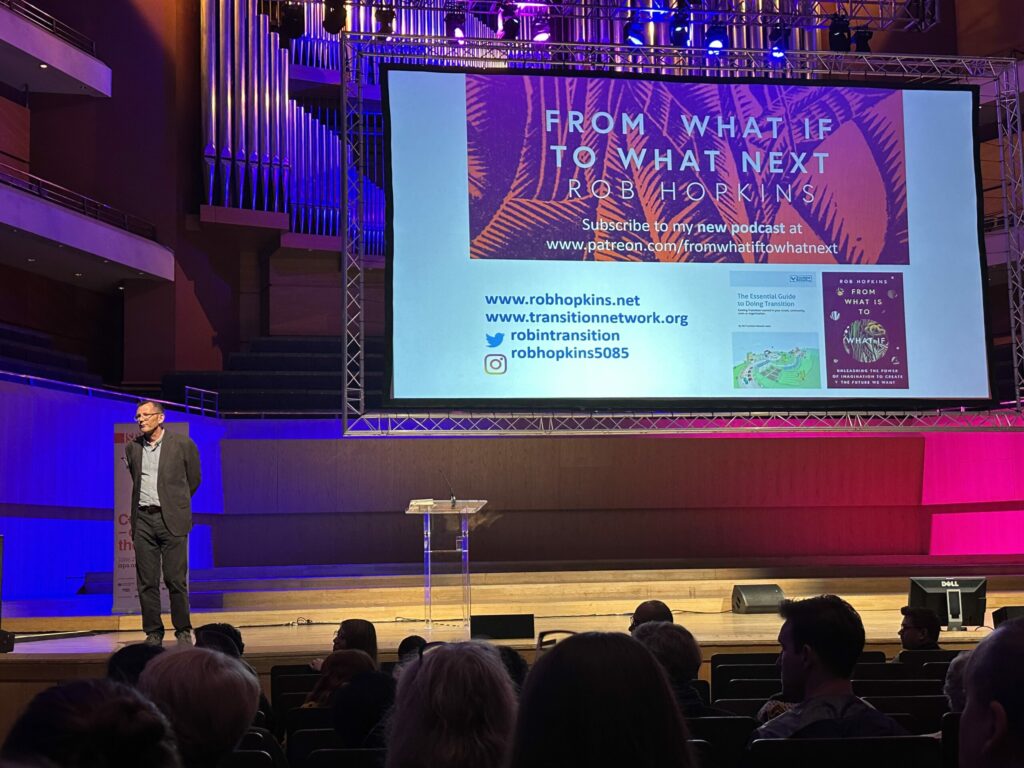
Heart of the Art Aravinth Kumaraswamy, Artistic Director of Apsaras Arts talks about his experience at the International Society for the Performing Arts (ISPA) that was held at Manchester, UK in June 2023. A report… This was the first time that I had the opportunity to attend the International Society for the Performing Arts (ISPA) session representing Apsaras Arts Dance Company. This year’s June 2023 edition was held in the historical city of Manchester in the UK, known for many things including music, football and its contribution to British history. The mission of ISPA is to strengthen the performing arts globally through the advancement of leadership, the exchange of ideas and by fostering a diverse and engaged membership. At the outset, looking at the well-thought through agenda, topics and sessions curated for ISPA Manchester June 2023, had this mission amplified. Co-creating the Future was the overarching theme for ISPA Manchester 2023. “What does co-creation really mean for performing arts leaders? How can co-creation help our sector move forward with intention, relevance and resilience? At the ISPA 2023 mid-year congress, we will come together in Manchester to take stock of where we are, to collectively reflect on these questions and to envisage what the journey forward could look like. Delegates will be challenged and inspired by a range of speakers and panelists, and we will provide space for conversation and exchange. Manchester has creativity and culture at its heart, and we look forward to welcoming delegates to explore the rich offering in the city and across the North West region.” The conference was structured into six key sessions with several other break-out sessions, performances and visits to iconic performing arts venues. The first session shed the spotlight on Co-creating the Future: Leadership and Co-creation. Over the years, there has been much discussion about balancing the power dynamic, but are we seeing any real change? The session deep-dived into who are the players who are setting the global cultural agenda and really whose voices are finding representation in the programming of the performing arts. The second session was titled Co-Creating the Future: Art and Next Generations. This session brought to fore the next generation of leaders and explored the opportunities and training options that are available to them. In line with the idea of co-creation, the session reinforced how co-creating can truly improve opportunities for the next generation. The next session focussed on the idea of equity, and was titled Co-Creating the Future: How do we co-create with equity? Focussing on the best practices in the industry, this session was a refresher in terms of how creators can ensure that all voices have equity in the space and what are some of the challenges and opportunities within. The fourth session was titled Co-creating the Future: The Role of the State in the Arts Sector. As a crucial session, this one was about how the state can actively collaborate with the arts and cultural sector without over-exerting its power; without interfering with thought and expression. The fifth session was titled Co-creating the Future: Sustainable Practice on the Road. This session was focussed on the notion of sustainability and allowed participants a sense of how they can learn from indigenous communities and other regions on how to reduce our carbon footprint. The final session was titled Co-creating the Future: Art and Conflict. There are many examples of arts projects that move to address these conflicts and/or raise awareness about those who are impacted. This session investigated in what ways these projects are effective, and do they, if at all, address the underlying sources of conflict. Each and every session was curated with thought and had enough room for questions and conversations. On the third day of the convention, ten new works were given an airtime to pitch for support and touring opportunities. Mehek, a contemporary dance production, produced by Aakash Odedra Company (UK) featuring Kathak dancers Akash Odera and Aditi Mangaldas caught my attention. Mehek is a new mainstage work by two of the great Kathak dancers of their respective generations: Aditi Mangaldas, dancing the first-ever duet of her 50-year Career with Aakash Odedra. Mehek gives a voice to an unspoken and overlooked love story – that of an older woman and younger man – weaving narrative that celebrates love in all its forms: raw, authentic, and infinitely resonant. In Mehek, the stage transforms into canvas, where bare feet inscribe rhythmic tales of desire, shadows blur and a single finger traces narrative down a trembling spine. These raw moments mirror the complexities of love, its electrifying spark, beguiling allure, shattering heartbreak and soothing comfort. Later that day, ISPA created an opportunity for art makers to share their works in an exhibition format of an Arts Mart. The Apsaras Arts Dance Company stall attracted many visitors which led to very interesting conversations. Overall, attending ISPA Manchester 2023 was a great meeting place to get to know art makers in the industry – from South America to Northern Asia – all under one roof.